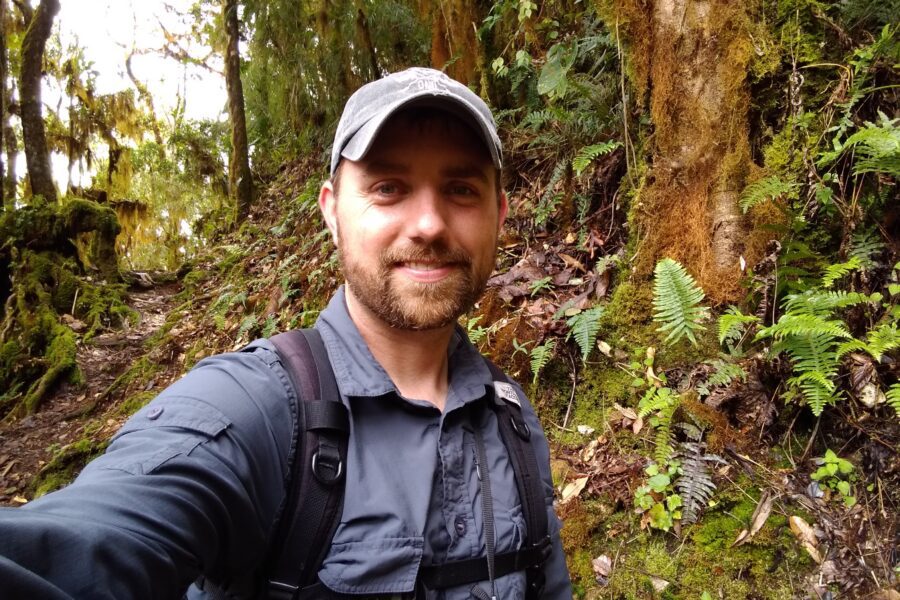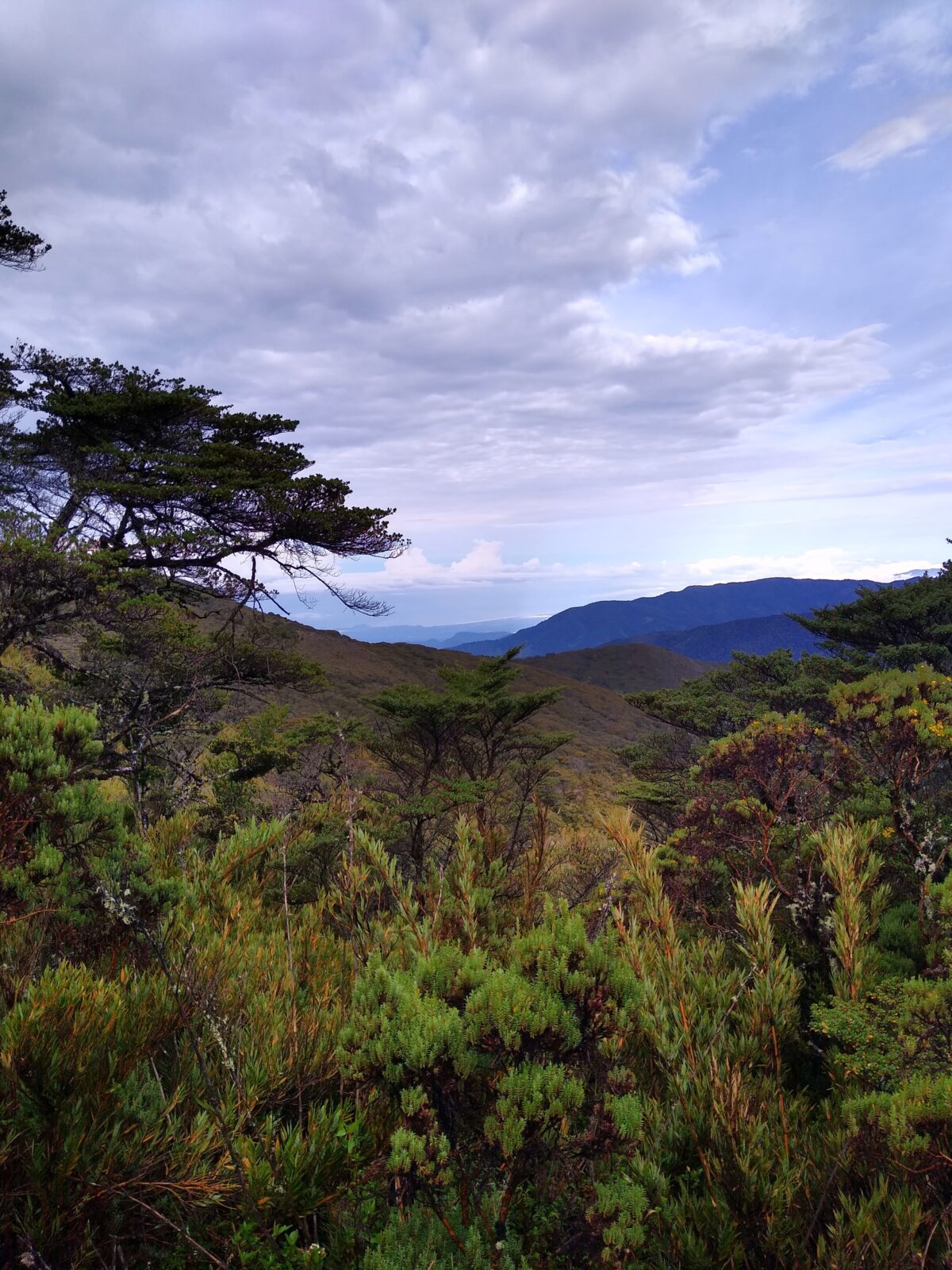
When Olivet zoology professor Dr. Derek Rosenberger ventured up Cerro de la Muerte (Mountain of Death) in Costa Rica in 2021, he didn’t realize he’d be making a significant discovery about Central America’s most important bumble bee species.
Dr. Rosenberger and Brendan Blowers-De León, director of the Quetzal Education and Research Center, a research station owned by Southern Nazarene University and supported by Olivet, were following up on research Dr. Rosenberger had begun two years before with Olivet students setting traps for their ongoing study of bark beetle species. What they found at the upper edge of the cloud forest, though, wasn’t just beetles but instead is the subject of a forthcoming note in the Proceedings of the Entomological Society of Washington and provides a new elevation range for the Mesoamerican bumble bee (Bombus ephippiatus).
“Bumble bee nests are actually incredibly difficult to find,” Dr. Rosenberger explains. “They’re basically a tiny hole in the ground — nothing like the large hive you imagine in a tree for honeybees.”
Yet studies of bee populations require nest locations to provide essential markers for population range.
“We’re actually not sure how far bumble bees can travel from their nests, which means it’s not good enough to say, when we’re studying a species, ‘We saw bees at this location,’” he notes. “To understand where they can live and the true range of their entire life cycle, we look for nests.”
Until Dr. Rosenberger’s trip up the Mountain of Death, few hives of B. ephippiatus had ever been found, making his discovery of a nest at almost two miles (3,000 meters) up the slope quite significant. Dr. Rosenberger’s discovery is the first documented find of nests at this elevation, pushing the permanent range of the Mesoamerican bumble bee nearly half a mile (750 meters) higher than it had ever been found before and establishing the species as a permanent resident of the upper reaches of the Costa Rican cloud forest.
Bumble bees aren’t a tropical species, Dr. Rosenberger points out. In fact, they actually become more prevalent the farther north one travels, contrary to the usual expectations of biodiversity in the tropics. There are four times as many species of bumble bees in Alaska, for instance, than there are in Costa Rica. Illinois has 16 native species, whereas Costa Rica has only five. When bees are found in Central America, they aren’t in the rain forests but rather at higher, cooler elevations. B. ephippiatus is common throughout Mexico, but at more southern latitudes their range becomes confined to mountains like Cerro de la Muerte. Understanding this range and its dependance on elevation is important not only for potential application of the bees as agricultural pollinators but also as climate change raises temperatures and potentially drives their range up the mountains.
Dr. Rosenberger’s discovery shows that the Mesoamerican bumble bee can live out its entire life cycle at the upper edge of the cloud forest. Subsequent trips uncovered an additional nest at 2,300 meters and more evidence that the species is a permanent fixture in this range instead of an occasional guest from farther down the slopes.
“God’s creation is beautiful and diverse,” says Dr. Rosenberger, who has taken multiple trips to Costa Rica for research with Olivet students. “The more we know about the details of creation — even a detail like insect species and where they’re found — the richer our understanding and the fuller our appreciation of God’s work becomes. A single bumble bee species might not seem too important, but it plays a huge role in the way an ecosystem fits together.”
Whether it’s the cloud forests of Central America or just down the road from Olivet’s campus at the new Swanberg Sanctuary, Dr. Rosenberger works to discover these hidden details of God’s creation. With his ornithology class, he recently constructed over a dozen wood duck nests for mating pairs at the sanctuary. The students placed some of the nests in wetlands at a distance from the river; others were placed in the forest just alongside the river.
“I’m curious to see if there’s a preference for what nesting boxes the ducks will choose,” Rosenberger explains.
When asked if he has a hypothesis, he shakes his head.
“But I’m excited to find out.”






